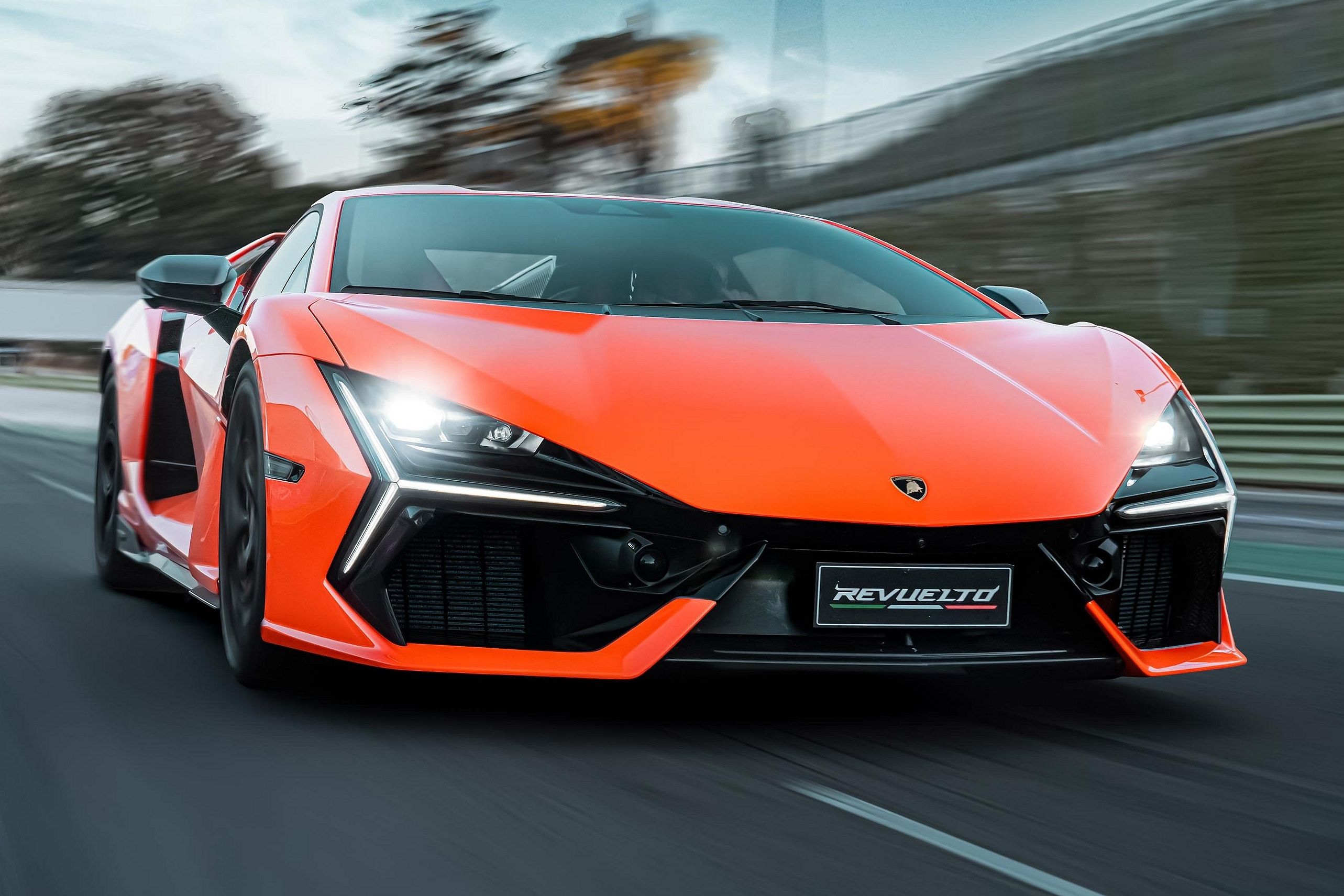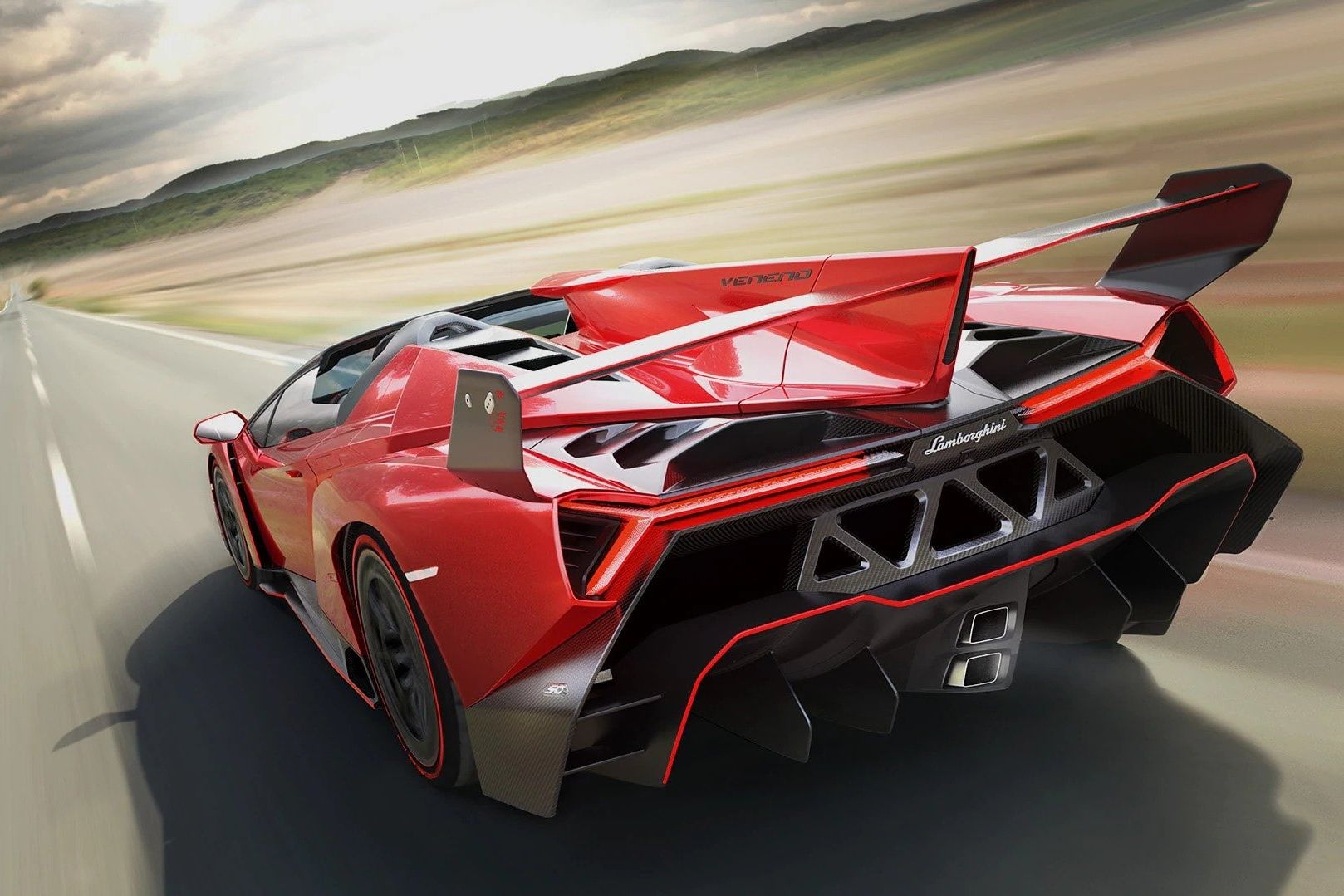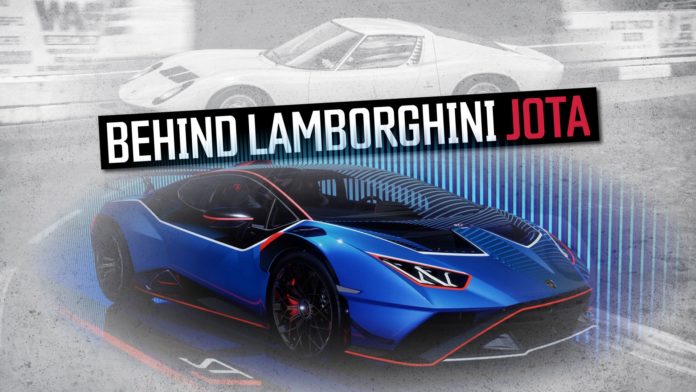Lamborghini has introduced the final edition of the Huracan, blessing it with a name only reserved for the most hardcore of models: Jota. Well, in this case, it’s STJ, an acronym that stands for Super Trofeo Jota, celebrating both the one-make Super Trofeo racing series and a nod to the FIA’s Appendix J regulation. The STJ is based on the Huracan STO, and its overall design is heavily influenced by the Super Trofeo cars that race in Lamborghini’s one-make series.
The STJ’s V10 still produces 631 horsepower and 418 lb-ft of torque, with the biggest changes made to the aerodynamic elements. Lamborghini claims a 10% increase in aerodynamic load, while retaining the balance the car is known for. While all of the above is extremely cool, we’re more interested in the acronym behind this model’s name, specifically the “J.”
Lamborghini Huracan STJ
- Engine
-
5.2L V10
- Horsepower
-
631 hp at 8,000 rpm
- Torque
-
417 lb-ft at 8,000 rpm
- Transmission
-
7-Speed DCT
- Powertrain
-
RWD
- 0-60 MPH
-
- Top Speed
-
193 mph
What Does Lamborghini’s Jota Badge Mean?
The Jota badge is lucky to exist because Lamborghini’s founder wasn’t interested in racing. Ferruccio Lamborghini was convinced it would drain the company’s resources, so he wanted to focus on building bonkers supercars for rich playboys. This was in stark contrast to his main rival, who only sold his products to rich playboys so he could fund his racing addiction. Because of this, Lamborghini’s name isn’t as intrinsically linked to motorsport as Ferrari, even though it built a few Formula 1 engines for Larrousse, Lotus, Ligier, and Minardi.

Related
10 Facts Everyone Should Know About Lamborghini
From inventing the supercar to failing to sell motorcycles.
Still, Lamborghini eventually relented and allowed his engineers and test drivers to play around. The first time the Jota name was used was still under Ferruccio Lamborghini’s ownership in 1970, though it’s worth mentioning that he sold the company two years later and retired. In 1970, Lamborghini’s test and development driver, the famous Bob Wallace, built a Miura test mule that hit all the targets set out by Appendix J for the FIA’s Touring and GT racing cars.
Since Lamborghini was known for using Spanish names for its cars, Wallace called the car the Jota. The name doesn’t have a special meeting, however, it’s just how you pronounce “J” in Spanish. Interestingly, in Japan, it’s the word used for a former rice paddy, and in Italy, it’s a soup made from beans and meat.
The First Car To Wear The Jota Badge
Wallace started with a Miura P400 and not the later, more famous P400 SV. He made massive changes to the car, replacing most of the structural components with aluminum and the heavy glass windows with plastic. He eventually removed 800 pounds from the car, making it a proper ‘superleggera.’ Additional changes include fixed headlights for improved aerodynamics, two smaller fuel tanks mounted in the side sills, upgraded suspension components that resulted in a wider front and rear track, and lightweight wheels.
The V12 received revised cams, a higher compression ratio, dry-sump lubrication, and an exhaust that didn’t need to conform to noise regulations. There are no official power figures, but it’s estimated that the V12 produced somewhere between 420 and 440 horsepower at nearly 9,000 rpm. Sadly, the Miura P400 Jota never went racing, and it was eventually sold to a customer after Wallace put loads of miles on the car. Sadly, the car was crashed by a Lamborghini dealership employee before its owner took delivery.
The Jota project wasn’t a complete loss, however. Lamborghini could never build the 500 units required to go racing, but a few of its more esteemed customers found out about the Jota and wanted their own. It wasn’t the same as the OG, however. These customers wanted the aluminum body and the suspension and engine upgrades but with the standard interior and all the creature comforts. Six were reportedly built using the Miura SVJ badge, and it’s extremely rare to see one, let alone get the opportunity to buy one. It’s the kind of car that only changes ownership when somebody dies. The last official sale we can trace took place nine years ago, and it sold for $2 million.
The Lamborghini Diablo Jota Was An Actual Track Car
The introduction of the second Jota model coincided with Lamborghini’s 30th birthday. Even in the ’90s, automakers celebrated occasions like these by introducing a limited edition model. In this case, it was the Diablo SE30, which was the standard Diablo introduced in 1990, but with a weight reduction and a power increase. Even though Bob Lutz had moved on, Lamborghini used the same weight-saving tactics, such as replacing the glass side windows with plexiglass and replacing the standard seats with carbon fiber units.
The V12 got an upgraded fueling system, magnesium intake manifolds, and a free-flow exhaust. Lambo also wanted to give it the look and feel of a racing car while retaining its road-legal status. That’s why the SE30s were equipped with a fire suppression system and racing harnesses. It also removed all the luxury interior items, including the radio and the air-conditioning.
The Lamborghini SE30 Jota was more of a kit than anything else. Lamborghini’s designers made this kit so the SE30 could be converted into an actual racing car, though not for any specific category. The modifications included a restyled engine lid with larger air intakes, a few additional engine upgrades that increased the output to 595 hp, and even more weight reduction thanks to the removal of the rearview mirror. Actually, the mirror was removed because the new engine cover made it impossible to see out of the rear. These mods meant the Diablo was no longer street-legal.
Lamborghini converted 15 SE30s at the factory, but an additional 13 kits were sent out so existing customers could have their cars converted post-delivery.
Lamborghini Aventador J Concept Used As A Preview
The Lamborghini Aventador made its public debut at the 2011 Geneva Motor Show. Many special editions would follow, eventually ending with the 2021 Ultimae. But back then, Lamborghini’s main focus was on initial coupe sales, followed by the inevitable roadster. The two models did not debut side-by-side, however. Instead, Lambo waited another year and unveiled the Aventador J at the 2012 Geneva Motor Show.

Related
Best Lamborghini One-Offs And Concepts
Lamborghini makes some of the wildest automobiles on the planet – here are a few of our favorites.
The Aventador J was a one-of-one speedster, which was eventually sold to one lucky customer for nearly $3 million. It used the same basic 700-hp V12 as the Aventador, and the designers also applied some weight saving by removing the radio and air-conditioning. Obviously, they also saved a chunk of fat by removing the roof. Interestingly, the Aventador J was not called a “Jota” because it had racing aspirations. It was an homage to the original one-of-one Miura Jota that crashed and burned. That being said, the Aventador was not done with the Jota name yet.
The Aventador Really Milked The Jota Name
|
Lamborghini Aventador S |
Lamborghini Aventador SVJ |
|
|
Engine |
6.5-liter naturally aspirated V12 |
6.5-liter naturally aspirated V12 |
|
Power |
729 hp @ 8,400 rpm |
759 hp @ 8,500 rpm |
|
Torque |
507 lb-ft @ 5,500 rpm |
530 lb-ft @ 6,750 rpm |
|
0-60 MPH |
2.9 seconds |
2.8 seconds |
|
Top Speed |
217 mph |
217 mph |
|
Curb Weight |
3,836 lbs |
3,615 lbs |
The Aventador J was the first Aventador to use the famous name, but Lamborghini really hit its stride in 2018. The Italian brand introduced the Aventador SVJ LP 770-4 at Pebble Beach. Once again, Lamborghini didn’t have a particular racing series in mind, but by now, the name Jota had become more synonymous with weight saving and increased power. The table above illustrates the power output and weight of all the later Aventador SVJ models compared to the Aventador S, which was the facelift of the OG Aventador.
While Lamborghini didn’t have a particular racing formula in mind, it did have a goal. It wanted to set a new Nürburgring lap record for a production car, which it did. The blistering time of 6:44.97 was thanks to the increased power and reduction in weight, but mostly due to Lamborghini’s then-new Aerodinamica Lamborghini Attiva (ALA), which is fancy Italian for active aerodynamics. Lambo set the record before putting the car on sale, so shortly after its debut at Pebble Beach, all 900 models were sold out.

Related
8 Crazy Cool Active Wings And Spoilers
There’s more than one way to produce mega downforce.
Aventador SVJ 63 Edition
Lamborghini had another surprise in store for its high-end customers. 900 units is a fairly large production run for a niche company, so it also introduced the Aventador SVJ 63 Edition, which was a commemorative edition celebrating the company’s founding in 1963. Only 63 were made, sporting a unique livery. A year after the hardtop made its debut at Pebble Beach, the SVJ Roadster was unveiled at the Geneva Motor Show. Thanks to a two-piece carbon fiber top, it retained the same power-to-weight ratio as the coupe. 800 of these were made, which is still not quite exclusive enough. So, a few months later, Lambo introduced the Aventador SVJ Roadster Edition. Guess how many they made.
Aventador SVJ Roadster Xago Edition
We’re not done yet. The was one final Aventador SVJ, this time limited to 10 models. It was called the Aventador SVJ Roadster Xago Edition, and it was the same as the other SVJs apart from an exterior hue inspired by the storms on Saturn. The paint took 120 hours to slather on, and the interior took another 180 to complete. The Jota name has been sparingly used since that very first Miura was made, but it’s apparent that Lambo made the most of the name during the Aventador’s 10-year production run.
Brand-New Huracan STJ – The First Baby Lambo To Get The Jota Treatment
Looking back at the history of SVJ models, we can see a trend. First of all, they were all V12-powered – the Huracan STJ bucks that trend by being the first junior Lamborghini to receive a Jota badge. But aside from the engine, all the production models previously received a weight reduction, a boost in power, and possibly suspension and aerodynamic tweaks to make them faster around the track. The Huracan STJ only hits two of these targets, thanks to enhanced aerodynamics and racing-derived shocks with adjustable rebound and compression. Even though it has the same power output as the STO, it’s a second faster around the Nardò Technical Center Handling Track than the car it’s based on.
Is that enough? We don’t think so, especially as this is the very last Huracan that will be made before the Temerario arrives. The best-selling Lamborghini super sports car of all time deserved a sweeter swansong. Was a 666-hp Huracan too much to ask for?

